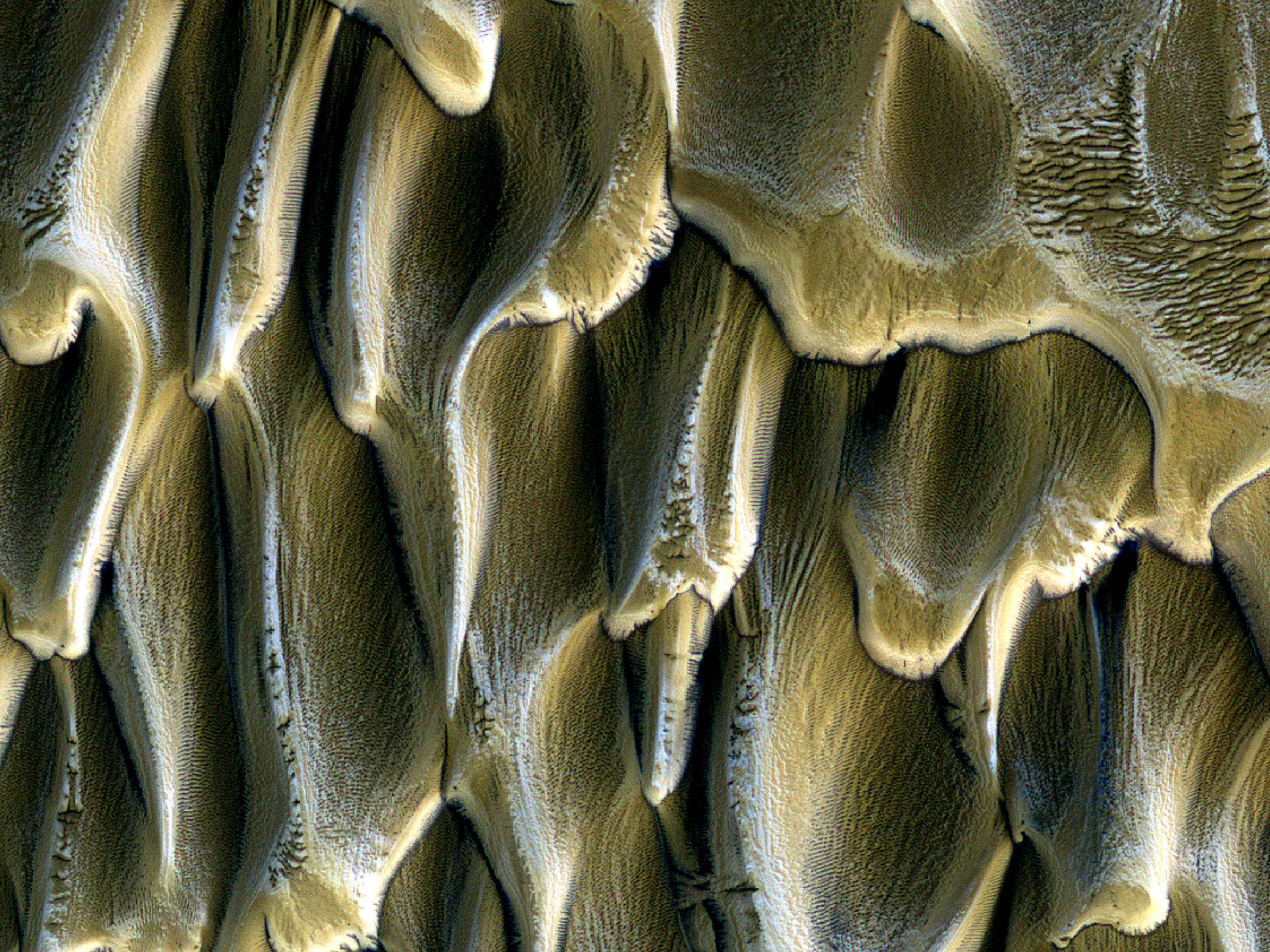Martian megaripples, which are intermediate-scale (about 5 to 40-meter spacing, and around 1 to 2-meters tall) wind-driven bedforms, have been studied extensively and thought to be largely inactive relics of past climates, with only a few exceptions. Similar to larger sand dunes, megaripples are abundant across the extensive sand seas near the North Polar deposits.
This image shows the distinct rows of megaripples in early northern spring, when surfaces are still covered in the ice and frost from winter. The image lacks contrast due to the surface frost and the limited lighting, as the Sun is barely over the horizon at this time of the year (when our image was acquired). However, the megaripples and dunes will soon become active as the frost sublimates and strong winds off the polar cap are able
to drive sand motion. Here,
we show a comparison between spring and summer, demonstrating how much change can occur in just one season.
ID:
ESP_032985_2640date: 9 August 2013
altitude: 318 km
https://uahirise.org/hipod/ESP_032985_2640
NASA/JPL-Caltech/University of Arizona
#Mars #science #NASA
